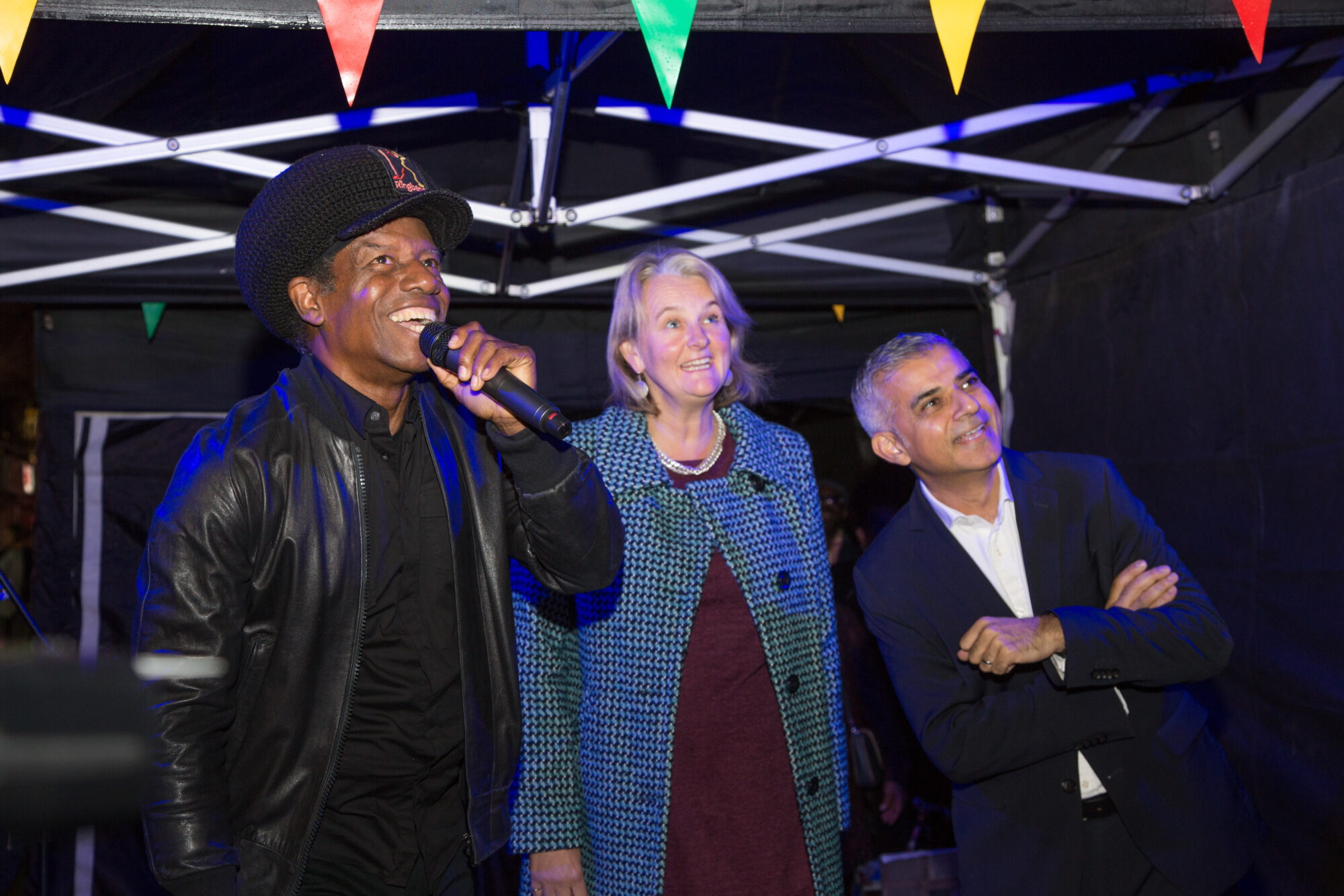Brixton Market
Scheme to connect the Market triangle and reinforce Electric Avenue’s presence

Responding to the history of Electric Avenue, this scheme delivers public realm and market management improvements to support market traders and local businesses. In addition to connecting the Brixton Market triangle, the scheme delivered shop-front façade improvements and a new landmark sign as part of a heritage-led intervention programme.
Electric Avenue was the first shopping street to be lit by electricity and is a key heritage asset within the Brixton Conservation Area. The street continues to provide an anchor point for local residents and visitors. The regeneration programme reveals the rich layers of history that have shaped Electric Avenue and celebrates the role that Markets have in today’s urban fabric – as distinct from high street retail, and embodying creativity, innovation and culture.
The scheme, developed in collaboration with the council and market traders, provides a new spatial coherence in a manner that retains the street’s iconic character, while establishing a street retail environment that is fit-for-purpose in the 21st century and serves to redress the street markets’ gradual decline. Stall locations have been rearranged to create a well-balanced street with improved access and visibility.
Co-production and open collaboration underpin the Brixton Market project. Extensive consultation with traders, shop owners, residents and the wider community informed the design process throughout. This has resulted in a scheme that best serves the needs of all, aids a sense of ownership and helps to deliver change from the bottom-up.
Supported by an evidence-based retail and market strategy, the public realm improvements, engagement and redesign of the market have worked as a catalyst for further improvements. These include the re-balancing of commodity mix, additional pitches to meet increased demand, reduction in criminal activity, and a new events space managed by Brixton BID.
The street has truly returned to its former glory and will be a great hub for the local community.
Eddy Grant, performing at Electric Avenue’s launch

Further information
Data
- Location
- Brixton, London
- Project type
- Urban design, Public and civic
- Budget
- £3.6m
- Status
- Completed
Credits
- Clients
- London Borough of Lambeth, Greater London Authority
- Gort Scott Team
- Fiona Scott, Jay Gort, Susie Hyden
- Collaborators
- Quarterbridge & ROI (Market Consultants), Mace (QS), HRW Engineering and FM Conway (Structural Engineers)
- Picture Credits
- Jakob Spriestersbach (Photographer)






















